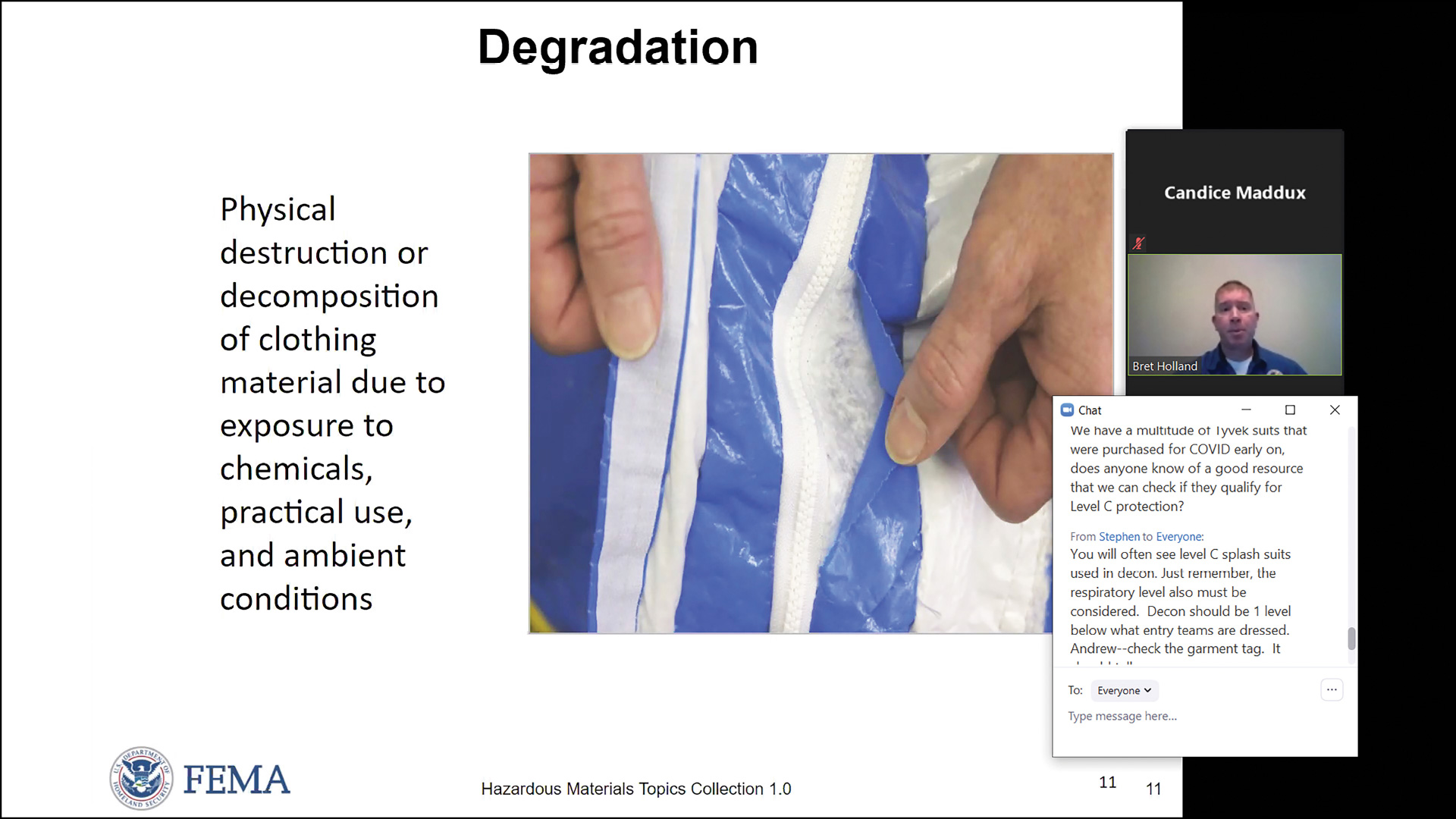
In 2020, the Federal Emergency Management Agency’s Center for Domestic Preparedness (CDP) faced the challenge of COVID-19 by increasing the number of its computer-based offerings.
By moving more of its content online, the center was able to ensure responders across the nation continue to have access to its training, which is free for state, local, tribal and territorial responders.
In 2019, the CDP hosted 86 web-based courses. In 2020, as COVID-19 restrictions prevented on-campus instruction, that number increased to 118.
Many of those additions were virtual instructor-led offerings, known as VILTs, which allow students to communicate in real time with instructors to enhance their understanding of the topics.
“Our online and virtual training options can’t replace what students receive through resident training — the hands-on exercises and ability to work with others as part of a team. However, it enhances that training by providing refresher and essential information in a format which meets students where they are,” Amanda Stewart, a lead instructional systems specialist at the CDP, explains.
Jose Vega, a 20-year veteran of the New York City Police Department’s Disorder Control Unit, teaches the CDP’s resident Field Force Operations course.
He now also instructs students virtually in field force operations–related courses, including active shooter and active assailant response, as well as social media strategies for law enforcement.
“The benefit of online training is the ability to reach a larger audience,” Vega says. “You are not confined to teaching in a classroom to students who have to be there in person. This has enhanced the safety of our staff and students during the pandemic.”
Lieutenant Peter Davidov has been a police officer since 1992 and a contract instructor at the CDP since 2017. He teaches the CDP’s public order policing courses.

Davidov was introduced to the CDP through courses he took, including its Train the Trainer course, which taught him to be an instructor.
He said he’s seen the lifesaving benefits of crowd control and mobile field force training he’s both received and provided to other officers.
“It’s absolutely essential to have people properly trained to do the job,” he says, noting that one bad use-of-force incident reflects poorly on every law enforcement officer.
Davidov said virtual training is often easier for law enforcement officers to fit into their schedules. And with a broader range of times available, it gives more students an opportunity to learn.
To enhance the student experience, the CDP provides students a variety of ways to engage with the instructors.
An additional instructor is online during every VILT presentation, monitoring the chat box and instantly answering questions. There is also a poll used to gauge the background and experience of the audience, which enables instructors to tailor each discussion.
The center also established a presence on YouTube in 2020, where it now shares instructional videos. To date, more than seven informational videos have been released, including four focused exclusively on COVID-19.
Collectively, these products have garnered more than 11,000 views.
For more information about the CDP’s online and VILT training offerings, including a list of all available courses, visit cdp.dhs.gov.
To view the CDP’s instructional videos, visit tinyurl.com/y8cd7wne.
As seen in the April 2021 issue of American Police Beat magazine.
Don’t miss out on another issue today! Click below:





